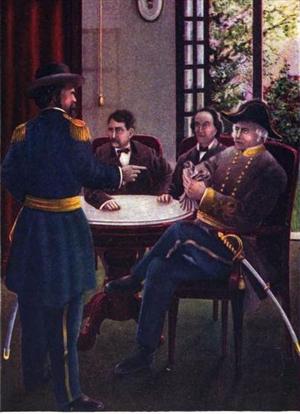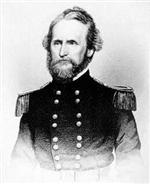
Directions: The Planter's House Hotel [ Waypoint = N38 37.581 W90 11.309 ] no longer exists, but was located on Fourth Street between Chestnut and Pine Streets in St. Louis, Missouri 63101.
Description: Although it no longer exists, the Planter's House Hotel faced east on the west side of 4th Street occupying the block between Chestnut and Pine Streets. The construction of the 300-room, four story hotel began in 1837. The hotel was damaged by fire and closed in 1887. Eventually, the damaged building was torn down in 1891. Mary Bartley described the hotel in her book, “St. Louis Lost”: [82]
Begun in 1837 and designed by Henry Spence, the new 300-room, four-story hotel was located at Fourth and Pine Streets, removed from the hurly-burly and odor of the riverfront. It had a classic, dignified exterior and shops and offices at the ground level. There was a huge main dining room, and three additional restaurants were associated with it. The grand ballroom featured decorative details copied from the Temple of Erectheus in Athens, Greece. The Planter's House Hotel was considered the finest in the West and was seen by civic leaders as a symbol of the new St. Louis. It became the gathering place for politicians and businessmen and was the byword for luxury and good service. A room cost $4.25 per person per day, and the rate included four sumptuous meals. The trustees leased the facility to various operators over the years for the then-considerable sum of $7,000 per month.




The Planter's House Hotel played a significant role in the struggle for Missouri in 1861. It was the location of a meeting between Frank Blair, Nathaniel Lyon, Claiborne Jackson and Sterling Price. Just ten days before the meeting, Nathaniel Lyon had been appointed a Brigadier-General of Federal volunteers and placed in command of all Federal forces in the State of Missouri. After meeting for four or five hours, Brigadier-General Nathaniel Lyon stood up, declared war on Jackson and Price, and stormed out of the meeting. Over the next several days, Lyon mobilized his forces, ultimately leading to the Battle of Boonville and sending the sitting Missouri Governor into exile. A number of events led up to this point, which I have described in the following sections: [83]